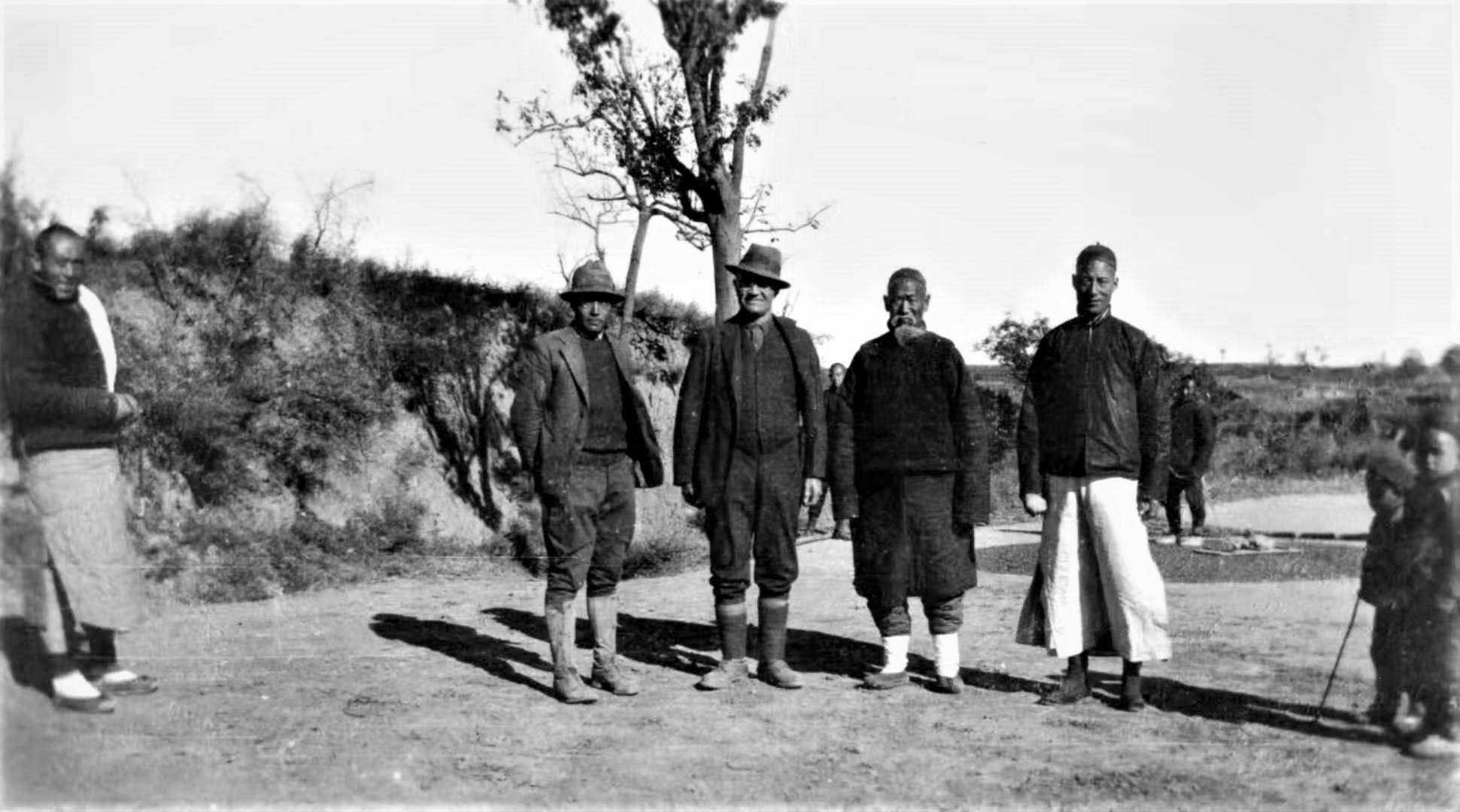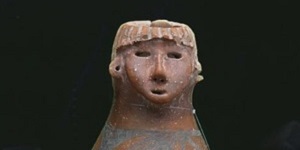The Yangshao Culture, named after Yangshao Village in Mianchi County, Henan Province, is an important Neolithic culture in the middle Yellow River Valley in China that played a crucial role in the development of Chinese civilization.
The Yangshao sites are located on the southern slope of the Shao Mountain about 9 km north of the Mianchi County. It was initially discovered in 1920 by Liu Changshan, a staff-member of the National Geological Survey. The Swedish geologist (and archaeologist) Johan Gunnar Andersson, with the permission of Chinese government, conducted the first excavation at the site in 1921. The site is more than 900 m from northeast to southwest, more than 300 m from northwest to southeast, totaling about 30 ha in area. The cultural deposit is 2 to 4 m in thickness. More than 5000 years ago, people lived on this land and creating their striking culture.

Andersson and team at the Yangshao village site, with Chinese members. From left to right: Chinese geologist and paleontologist YUAN Fuli, Johan Gunnar Andersson, Yangshao Village Chief Mr Wang and a Chinese Preacher Mr Wang, posing together for a photo at Yangshao Village in 1921, at the time of the first excavation. (Image provided by Mr HOU Junjie)






